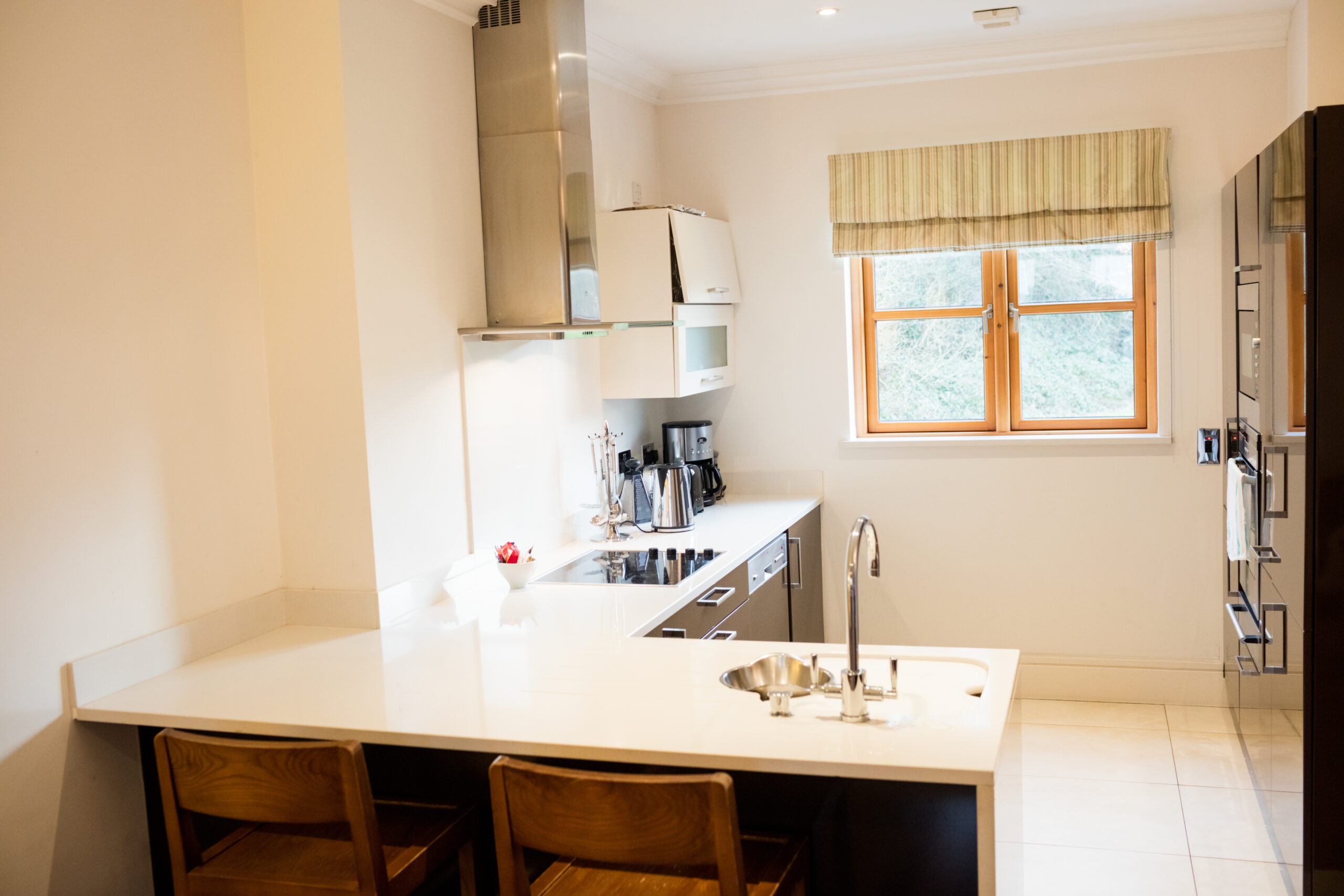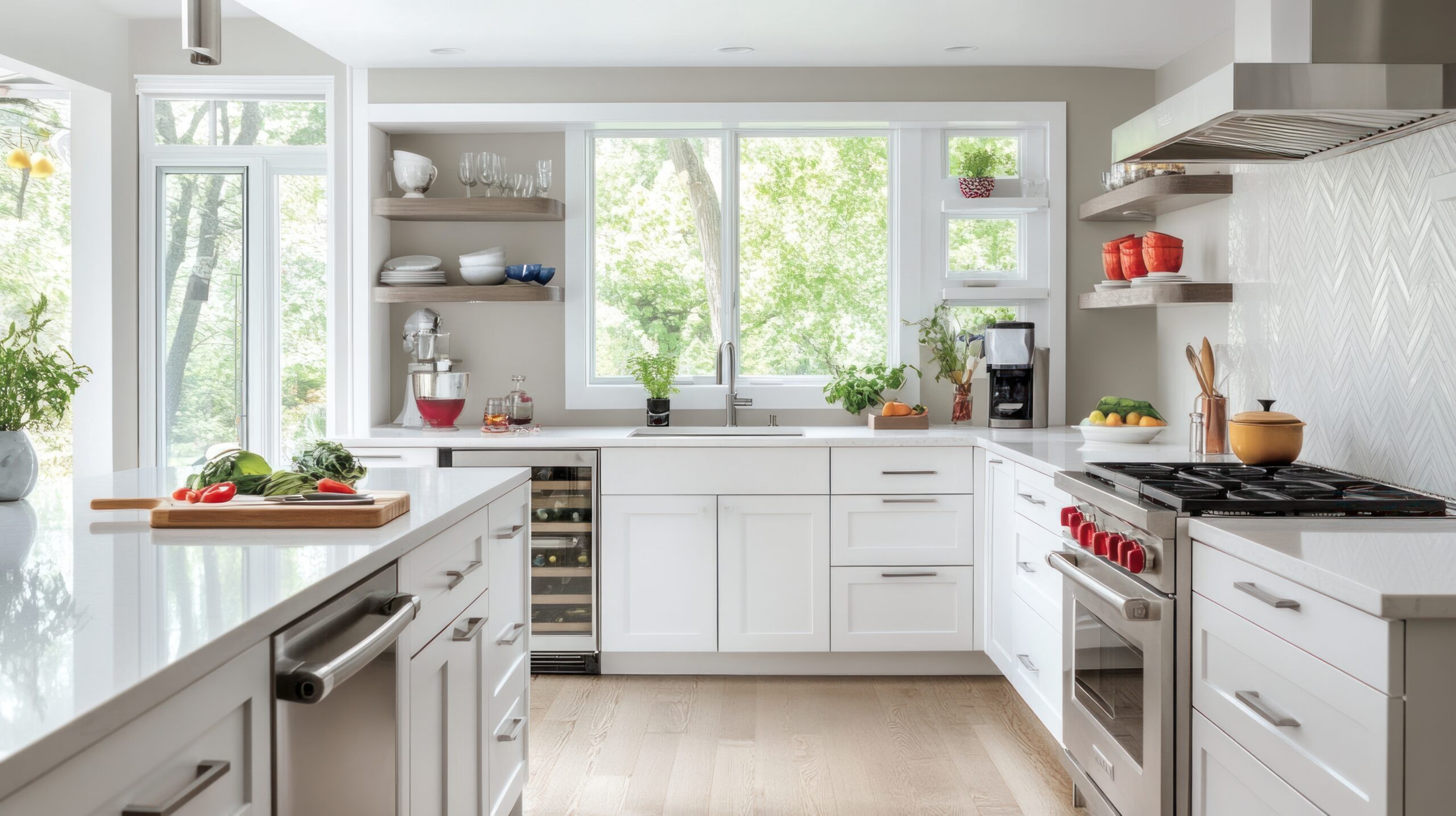Wet kitchen tips can be implemented in a home kitchen space to create an efficiently working area. Here are 5 important tips that are highly crucial for home owners to be aware of.
Wet Kitchen Tips #1: Proper Drainage System

For wet kitchen designs, there is no good design without the incorporation of adequate drainage which plays a vital role in efficient water management and preventing other problems such as flooding, moisture accumulation or mould. One key feature of good drainage involves the strategic placing of floor drains. They should be placed in very strategic positions especially next to the sink and cooking areas where the use of water is more frequent.
Also, slight slopes should be made in the floors towards the drain for the free flow of water without any possibility of formation of pools of stagnant water. It must be slight to avoid inconvenience in walking and still serve its purpose of directing water to where it should go.
A good sink drainage system should be in addition to floor drains. An adequately sized drain pipe is necessary for the sink although it is recommended that it come with a built-in strainer to catch debris and prevent clogs. Ensuring longevity in the wet kitchen with heavy water usage — the usage of PVC pipes due to their durability and resistance against water is further recommended.
Similarly, maintenance by way of clearing from drains and pipes of debris should be done in order to ensure that it remains open. The drainage system should be designed to handle volumes of water that come with the high levels of water. Installing splash guards around the sink areas helps prevent much water spilling on the floors — puts less strain on the drainage system.
Finally, good ventilation in the wet kitchen complements the drainage when it reduces humidity and moisture that may lead to mould development if not managed appropriately. Overall, a well-planned drainage system is indispensable for having a functional, safe and hygienic wet kitchen that contributes to an efficient workspace and prevents long-term damage caused by water.
Wet Kitchen Tips #2: Incorporating Splash Guards

Splash guards are one of the most important aspects in a wet kitchen design — serving practical and hygienic purposes. Located behind sinks, countertops and cooking areas, splash guards protect the walls from water, grease and other liquids that inevitably come up during meal preparation and cleaning. One of the major benefits associated with the installation of splash guards is ease of maintenance. Without them, the walls get stained in no time due to the constant contact with water and cooking spatters — it all adds up to expensive repairs or frequent repainting. Splash guards are normally made of tiles, stainless steel or even tempered glass which one can wipe easily — reducing much hassle in everyday cleaning.
Besides protecting the wall, splash guards protect the kitchen's beauty. They come in various materials, patterns and colours that could complement the design theme in your wet kitchen — be it modern, minimalist or traditional. Glass and stainless steel splash guards are able to reflect light into the kitchen, making it appear brighter and roomier. For a little more decorative touches, patterned tiles or mosaic backsplashes will add a touch of your personality while serving their purpose.
Splash guards will also be able to inhibit mould and mildew growth by not letting water seep behind wall surfaces which is the usual case when there is moisture present. This adds to a clean and sanitary kitchen — something very important in a place where food is prepared. Durable, versatile and low maintenance, the splash guard is one important consideration for every wet kitchen. They are protectants yet at the same time visually appealing and come in many different fashions.
Wet Kitchen Tips #3: Clear Zoning And Separation

The best practice in wet kitchen design is segregating areas into zones or distinct areas where particular activities can be performed. Separating this wet kitchen into wet and dry zones will surely establish order in the activities for efficiency and cleanliness. The wet zone in the kitchen would be utilised for performing tasks that require water such as washing dishes, preparing vegetables and cleaning. This area should be equipped with a sink, water-resistant countertops and proper drainage to handle the frequent use of water. Materials such as Silestone or granite would go well with the countertops while for the cabinets, BWR plywood should be a pretty smart choice.
The dry zone is a place where chopping, ingredients mixing and cooking are done. These areas are divided with the purpose of avoiding the spread of moisture to dry ingredients or appliances and reducing the chance of spills or damage. A clearly differentiated dry zone keeps the kitchen clean and organised while in small kitchens, everything piles up in no time. Instead, a divider will be installed to visually and functionally separate these areas without compromising the space.
Proper lighting and ventilation also enhance the benefits of zone separation. It is important that the wet zone be well-ventilated with a range hood or exhaust fan to eliminate moisture and cooking fumes. Adequate lighting in each zone promotes safe and efficient work. By creating clear zones in your wet kitchen, you will not only be optimising workflow but also ensuring that your kitchen materials last long — keeping your kitchen organised, clean and easy to maintain. Zone separation is one good design strategy to enhance functionality and hygiene within any modern kitchen.
Wet Kitchen Tips #4: Using Durable Materials

In the case of a wet kitchen design, durability for all materials used is a key concern to make it long-lasting, functional and easy to maintain under very humid conditions. Particular attention should be given to the countertops which can preferably be made from granite, quartz, or Silestone. These are not only beautiful but highly resistant to water damage, stains and scratches. Silestone is just one example — it is non-porous and easy to clean, offering hygiene within the busiest kitchens. Strength and versatility also make quartz an excellent option for a wet kitchen given the high resistance of this material to heat, moisture and protection against bacteria.
Other important aspects in a wet kitchen are cabinetry. Use BWR plywood which is a type of material designed to withstand high humidity and water exposure. This type of plywood has a water-resistant coat on it — perfectly suitable for the wet kitchen cabinets. The laminations of the cabinet surfaces can be considered further for extra durability and ease of cleaning.
For the floorings, non-slippery ceramic tiles or waterproof vinyl are very good options. Not only do these materials withstand the continuous exposure to water but slipping and falling incidents are also prevented — making the wet area safe. Tiles are especially useful because they come in a lot of different designs and are easy to clean.
Finally, the installation of tile or tempered glass backsplashes behind the sinks and cooking areas provides added to the kitchen. These materials do not stain and can easily be wiped down for keeping the kitchen clean and fresh. Use durable water-resistant material to create a functional, long-lasting wet kitchen that stands up to daily usage.
Wet Kitchen Tips #5: Ensuring Proper Ventilation Set-Ups

Proper ventilation is important in a wet kitchen design to keep the area clean, safe and away from excessive moisture, odours and heat. Activities performed in the wet kitchen such as washing and heavy cooking will cause steam and humidity to shoot up instantly. This moisture, if not well ventilated eventually forms moulds and mildew that degrade materials in the kitchen and compromise indoor air quality. Among the best methods for ventilating a wet kitchen is to install an efficient range hood over the cooking area. A range hood removes smoke, grease particles and steam generated during cooking.
It is also important to have windows or installed exhaust fans that allow for ventilation — this helps in circulating fresh air and keeping off humidity, getting rid of odours from frying or boiling. These are particularly useful in wet areas where washing occurs. This shall assure reduction of excess moisture that may lead to dampness.
Other practical advice is the incorporation of adjustable vents which one could open or close depending on one's need for ventilation. This allows one to control or temper the amount of air that comes through especially when heavy cooking activities have to be performed. Aside from these functional appliances, one may install ceiling fans to augment air circulation in a bigger kitchen area.
A well-ventilated wet kitchen is one that keeps the space comfortable, protecting your cabinetry, countertops and flooring from water damage. It reduces the chances of bacterial build-up due to good ventilation and ensures cleanliness without odours — making your kitchen hygienic and pleasant to use every day. In the long run, it saves repair costs while improving the overall experience in the kitchen.





